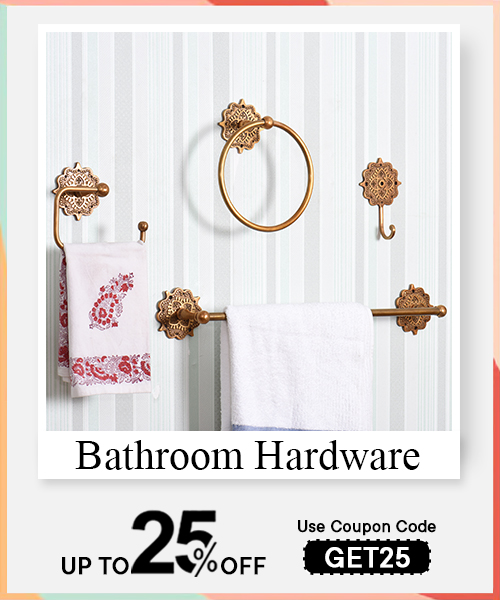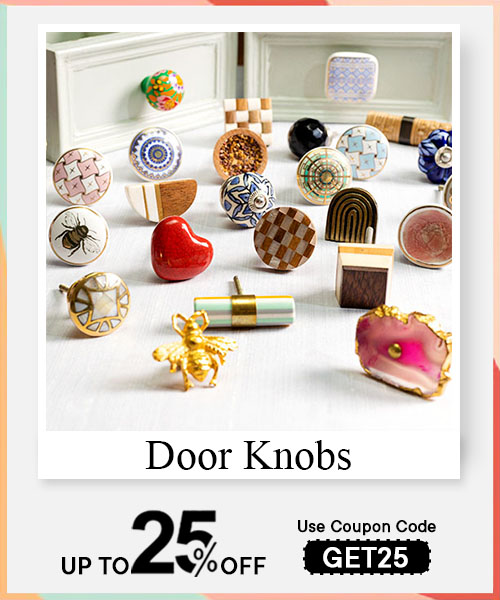Modern homes no longer treat walls as blank dividers. They have become canvases for expression, blending functionality with personality. Current interior design trends lean on accent walls, bold geometry, layered textures, and modern wall art. Homeowners experiment with subtle wallpaper patterns, earthy palettes, and modular panels. Each choice reflects the urge to personalize space, making it resonate with daily moods. From Scandinavian inspired minimal walls to vibrant tropical prints, wall decor ideas carry cultural whispers. The takeaway: walls today are living narratives, shaping how homes feel, breathe, and reflect identity.
Interior design trends for walls are shifting toward versatile and layered aesthetics. Accent walls remain dominant, often painted in deep, moody colors or enhanced with wall art. Wallpapers with metallic sheens and geometric patterns are also seeing a revival. Minimalist wood paneling, exposed concrete, and stone cladding add natural warmth while staying modern. In urban homes, multifunctional walls with floating shelves or integrated lighting bring both style and utility. Social media influence also drives bolder choices, murals, graffiti, and oversized art prints create statement pieces. These trends reveal a shift from safe, neutral walls to dynamic surfaces that inspire.
Modern wall designs mirror the fast yet expressive rhythm of contemporary living. Busy professionals lean toward clean lines, calming colors, and minimal textures that promote clarity and focus. Families opt for functional walls that double as storage or display spaces. Global exposure has also influenced choices, Moroccan tiles, Japanese wood slats, and Scandinavian whites are common in urban apartments. Digital lifestyles have introduced interactive walls, projector friendly or smart lighting enhanced surfaces. Wall decor ideas no longer serve aesthetics alone but highlight individuality, cultural openness, and practical living. The takeaway: walls have become both style markers and lifestyle reflections.
Color is more than surface, it's emotional architecture. A carefully chosen palette sets the tone of a room and its inhabitants. Neutral shades create calm, while vibrant hues energize. Interior design uses color psychology to balance mood enhancement with visual flow. Wall paint colors no longer follow single shades, gradients, dual tones, and soft contrasts dominate. Calming tones like sage green and pastel blue are preferred for relaxation, while earthy terracottas bring warmth. Whether subtle or bold, the wall’s color defines how spaces are lived in and remembered.
Read More : Decorative Wall Hooks To Hang Your Things in Style
Wall colors directly influence how rooms feel, shaping energy and behavior. Warm shades, reds, oranges, yellows, stimulate conversation and activity, making them suitable for dining or social spaces. Cooler tones, blues, greens, purples, induce calm, often chosen for bedrooms or study rooms. Neutrals like beige, white, or gray provide flexibility, enhancing light and blending with varied decor. Research in color psychology shows softer palettes lower stress and aid concentration, while high contrast walls create vibrancy. Cultural context also matters, in India saffron or yellow often symbolizes auspiciousness, while in Japan muted tones echo Zen balance. Ultimately, wall paint colors set ambiance with emotional precision.
Living rooms demand balance, comfort with vibrancy, familiarity with freshness. Current trending palettes lean toward earthy tones like terracotta, clay, and muted browns paired with off whites. Shades of sage green and dusty blue are widely used for their calming yet contemporary appeal. Neutral palettes are often elevated with accent walls in deep navy or emerald, creating subtle drama. In smaller apartments, pastel palettes brighten up compact spaces without overwhelming. The growing trend of dual toned walls, one light, one bold, adds depth and character. The takeaway: trending living room colors merge global inspiration with practical, mood driven design.
Walls gain character through texture and material. Smooth painted surfaces offer simplicity, but modern interiors demand more depth. Textured paint introduces subtle play of shadow, while wallpapers create variety with patterns and tactile appeal. Exposed brick and stone cladding echo raw, earthy aesthetics, grounding urban homes in timeless warmth. Wood panels bring both tradition and modernity, balancing warmth with structure. Texture is no longer ornamental alone, it’s functional, insulating spaces and enhancing acoustics. Interior design thrives on contrasts, mixing sleek finishes with rough surfaces. The takeaway: material choice is design language, turning walls into storytelling surfaces.
Textured walls create depth, prevent monotony, and stimulate visual interest. Unlike flat paint, textured finishes absorb and reflect light differently, giving walls movement. They can soften large blank surfaces and make compact spaces feel layered. Acoustic benefits are another advantage, rougher textures like stone cladding reduce echo. Textures also link homes to cultural memory, exposed bricks recall industrial lofts, wooden panels echo traditional craftsmanship, and wallpapers channel artistic motifs. Psychologically, textured walls add comfort, making interiors feel less sterile. Functionally, they conceal minor wall imperfections. The takeaway: adding texture ensures walls serve aesthetics, utility, and cultural continuity.
Modern interiors balance practicality with aesthetic value, and material choices reflect this. Textured paint works best for minimalist homes, offering subtle variety without clutter. Wallpapers with geometric or floral motifs suit feature walls. Exposed brick and concrete finishes define industrial inspired apartments, while wood panels add organic warmth. Stone cladding is popular for accent corners, blending durability with sophistication. In compact homes, lightweight modular panels provide versatility and easy installation. Globally, hybrid materials, like laminate panels or eco friendly bamboo boards, are gaining traction. The takeaway: the right material bridges style and function, making walls both timeless and adaptable.
Murals transform walls into narratives. Unlike wallpaper or plain paint, a wall mural invites emotion, scale, and identity into interiors. Abstract art, landscape painting, or contemporary artwork can reshape perception of space. A single mural becomes a statement, tying together decor themes while reflecting personal taste. Historically, murals decorated temples, palaces, and civic spaces, embedding cultural values in visual form. Today, graffiti inspired or hand-painted motifs bring the same storytelling into modern homes. The takeaway: murals blur art and architecture, turning bare walls into living canvases of memory and imagination.
Murals personalize interiors by embedding identity into space. Unlike generic wall decor, murals are tailored, whether abstract art, geometric patterns, or a calming landscape painting. Homeowners often choose motifs tied to personal experiences, a coastal scene recalling travels, or floral designs echoing heritage. Contemporary artwork adds modern edge, while graffiti inspired murals channel urban energy. Functionally, murals reshape spatial dynamics, making compact rooms appear larger or cozy. They also foster emotional resonance, children’s rooms brighten with playful characters, studies inspire with abstract forms. Unlike store bought decor, a mural becomes intimate and unique. The takeaway: murals personalize homes through visual storytelling anchored in memory, culture, and mood.
Hand-painted walls return because authenticity matters. In an era dominated by mass produced wallpaper, painted murals restore individuality. Historically, hand-painted frescoes adorned churches, temples, and royal courts. They symbolized both artistry and permanence. Today, the resurgence comes from the desire for tactile, imperfect beauty. A brushstroke carries warmth no print can replicate. Interior trends favor sustainable, lasting choices over disposable decor, and murals meet that demand. Contemporary artists now collaborate with homeowners to design bespoke pieces, abstract swirls, botanical scenes, or cultural motifs. Unlike digital prints, these evolve with the room’s light and texture. The takeaway: hand-painted walls thrive again because homes seek human touch and timeless narrative.
Walls are no longer passive, they serve storage and display. Floating shelves, modular units, and wall-mounted cabinets optimize space without clutter. Interior design now blends form and utility, with shelves doubling as decor. Open shelving frames plants, books, or ceramics, while hidden cabinets keep essentials discreet. Space optimization is key, especially in compact apartments where vertical surfaces extend function. Historically, built in niches served similar purposes in Indian and Mediterranean homes. Today, modern shelving adapts that idea with cleaner lines and modular flexibility. The takeaway: functional walls merge storage with style, ensuring every inch of home adds value.
Shelving improves walls by merging storage with design. Floating shelves lighten visual bulk while displaying curated objects, books, souvenirs, or art pieces. Modular units adapt to needs, shifting shape as families grow. Wall-mounted cabinets streamline clutter, keeping essentials hidden but accessible. Stylistically, shelving allows layering, plants soften geometry, ceramics add texture, lighting highlights collections. Cultural roots of shelving go deep, Indian alcoves once displayed lamps or idols, Mediterranean niches held pottery. Today, the same concept evolves into sleek urban interiors. Functionally, shelves maximize vertical space, especially vital in small apartments. The takeaway: shelving refines homes by blending organization with visual storytelling.

Apartments demand efficient, compact solutions. Floating shelves are versatile, holding books, décor, or daily essentials without heavy furniture. Wall-mounted cabinets hide clutter while preserving floor area. Modular shelving adapts to layouts, stackable or adjustable to fit awkward corners. Open display racks double as statement walls, merging decor with storage. For kitchens, magnetic strips and pegboards save space while adding utility. In living areas, slim shelving frames televisions or artwork seamlessly. Globally, Japanese interiors inspire smart minimalism, while Scandinavian designs emphasize light, open shelves. The takeaway: best wall storage in apartments balances utility with elegance, maximizing space without overwhelming interiors.
Light defines how walls are perceived. A textured surface without light remains unnoticed, but with LED lighting or accent lamps, it becomes dramatic. Statement walls often combine 3D wall panels, wall sconces, or layered lights to create mood. Historically, palaces and temples used oil lamps to highlight carvings, a tradition now reimagined with modern lighting. Decorative accents, mirrors, metallic art, or sculptural panels, further enhance depth. Together, they transform a plain wall into a focal point of the room. The takeaway: lighting and decor accents give walls rhythm, making them more than static surfaces.
Lighting reveals texture by controlling shadow and depth. Wall sconces grazing across stone cladding emphasize its ruggedness. LED strips behind 3D panels create dramatic relief, making designs pop. Even simple wallpaper patterns gain dimension when washed with soft uplighting. Accent lighting not only improves aesthetics but alters perception, rough textures feel more tactile, smooth finishes glow serene. Cultural echoes are clear, temples once lit intricate carvings to amplify sacred narratives. Today, modern homes replicate this with concealed lights or directional lamps. The takeaway: lighting elevates walls, ensuring textures speak, surfaces breathe, and spaces carry emotional resonance.
Accent walls command attention by breaking visual monotony. A single wall painted bold or clad in textured material becomes the anchor of a room. Lighting deepens its impact, spotlights on artwork, LED strips on panels, or sconces framing a surface. Accent walls also direct energy, living rooms gain vibrancy, bedrooms intimacy, and halls drama. Cultural context matters, Indian homes often dedicate an accent wall for sacred niches, while Western homes showcase art or mirrors. Accent walls also guide layout, orienting furniture and flow. The takeaway: accent walls act as visual magnets, shaping identity and rhythm within interiors.
Eco-friendly walls combine aesthetics with responsibility. Bamboo panels, recycled wood, and eco-friendly paint allow homes to embrace sustainability without compromising style. These materials reduce carbon footprint while adding texture, warmth, and cultural resonance to interiors. Historically, traditional homes in Asia relied on natural, renewable materials, creating environments in harmony with nature. Modern sustainable design adapts this legacy with contemporary finishes and modular solutions. Walls become functional statements of ethics and taste. Eco-conscious homeowners now choose materials that are renewable, low-VOC, and recyclable, proving that sustainability can be elegant. The takeaway: responsible materials define both style and conscience.
Eco-friendly wall materials offer more than environmental benefits. Bamboo panels, recycled wood, and natural paints reduce toxins while enhancing indoor air quality. Sustainable materials also provide durability, texture, and natural insulation. Culturally, these choices echo traditional architecture, where renewable resources were central to design. Modern homeowners seek these qualities to harmonize wellness and aesthetics. In addition, eco-friendly walls often feature versatile finishes, from smooth bamboo veneers to reclaimed wooden panels, offering both rustic charm and contemporary appeal. Choosing sustainable materials communicates conscious living, aligns with global environmental trends, and supports local artisans. The takeaway: eco-friendly walls are responsible, stylish, and culturally grounded.
Sustainable designs influence modern interiors by combining utility, health, and aesthetics. Recycled wood panels, bamboo slats, and low-VOC paints offer warmth, texture, and subtle cultural references. They reduce energy consumption, improve acoustics, and enhance durability. Interiors featuring eco-friendly materials often appear more grounded, calm, and cohesive, blending minimalism with natural motifs. This approach also aligns with wellness trends, creating spaces that feel clean, healthy, and ethically curated. Globally, designers draw inspiration from traditional eco-conscious architecture, integrating modern finishes to meet contemporary functionality. The takeaway: sustainability shapes interiors that are elegant, functional, and environmentally responsible.
Classic paneling, wainscoting, beadboard, and wooden panels, embodies elegance and structure. These elements have historical roots in Victorian and colonial interiors, blending artistry with durability. Paneling provides visual rhythm, depth, and a sense of permanence. It can highlight architectural details or serve as a backdrop for art and lighting. In modern homes, classic wall paneling bridges heritage and contemporary aesthetics, balancing ornate patterns with minimalist spaces. Materials can range from hardwoods to engineered boards, accommodating budgets while maintaining timeless charm. The takeaway: paneling preserves tradition while offering enduring style and function.
Paneling adds depth, proportion, and sophistication. Wainscoting emphasizes lower wall sections, balancing furniture and artwork, while beadboard introduces texture and visual interest. Wooden panels exude warmth, integrating historical charm with contemporary design. Paneling also functions practically, protecting walls and concealing minor imperfections. Historically, paneling symbolized wealth and craftsmanship, and today it continues to elevate interiors while reflecting heritage. Modern finishes allow bold or subtle interpretations, from high-gloss painted panels to natural wood grains. The takeaway: paneling enriches walls with elegance, texture, and historical resonance, creating spaces that feel curated and timeless.
Classic paneling suits living rooms, dining areas, and bedrooms where sophistication and focus are desired. Wainscoting in dining rooms adds formality while protecting surfaces. Bedrooms benefit from beadboard or wood panels for warmth and texture. Hallways and entryways use paneling to create visual continuity and highlight architectural features. Paneling also works in offices or studies, lending professional gravitas while integrating traditional charm. Culturally, European and colonial designs emphasize decorative panels, while Indian homes often use carved wooden panels to frame art or niches. The takeaway: paneling is versatile, enhancing both style and function in key rooms.
Wallpaper has reemerged as a flexible, bold design tool. Patterned wallpaper, floral motifs, and geometric designs provide instant visual impact without permanent alterations. Peel-and-stick options allow seasonal or experimental changes. Historically, wallpapers conveyed luxury and personality in European homes, while in Asia, decorative screens and murals served similar purposes. Bold prints act as focal points, energizing spaces or accentuating moods. Contemporary wallpaper also integrates textures, metallics, and subtle gradients. The takeaway: wallpaper blends practicality with artistry, transforming walls into statements with minimal effort.
Wallpaper returns because it offers quick transformation, pattern versatility, and visual depth. Peel-and-stick versions reduce installation complexity while allowing frequent updates. Bold floral motifs, geometric patterns, and textured designs create focal points, complementing furniture and decor. Historically, wallpaper was a luxury medium conveying taste and status; modern iterations retain artistic expression while embracing minimal disruption. Designers use wallpaper to evoke emotion, enhance room scale, or reinforce themes, from tropical serenity to urban industrial. Its resurgence also aligns with DIY trends and affordable personalization. The takeaway: wallpaper combines style, flexibility, and personality for contemporary walls.
Bedrooms benefit from calming or immersive prints, such as muted florals, abstract landscapes, or serene gradients, promoting relaxation. Halls and living areas allow bolder geometric, botanical, or metallic motifs, energizing circulation spaces. Pattern scale matters: small prints create subtle texture, large prints form dramatic focal walls. Cultural influences inspire choices: Japanese minimal motifs for tranquility, Moroccan tiles for vibrancy, Indian floral patterns for warmth. Wallpapers can integrate accent lighting or complement furnishings, enhancing cohesion. The takeaway: bold prints work when scale, color, and context align, creating harmony between wall, space, and lifestyle.
Minimalist walls emphasize simplicity, balance, and space clarity. Neutral tones, simple wall finishes, and Scandinavian design inspire calm, uncluttered interiors. Minimalist decor removes visual noise, allowing furniture, light, and textures to breathe. Historically, minimalism evolved from modernist movements, emphasizing function over ornament. In homes today, walls act as serene backdrops for curated decor, art, or greenery. Subtle textures, soft color gradations, and open surfaces enhance spatial perception. The takeaway: minimalist walls provide calm, clarity, and aesthetic flexibility, creating spaces that feel expansive and intentional.
Minimalist walls create calm by removing distractions and emphasizing essential forms. Neutral tones, white, beige, soft gray, reflect light and expand spaces visually. Smooth finishes, subtle textures, and unobtrusive accents allow furniture and decor to shine without overwhelming the room. Scandinavian design influences balance through symmetry, natural materials, and restrained patterns. Minimalist walls also support mental clarity, providing serene visual anchors that reduce stress. Even small apartments benefit, as open wall surfaces make interiors feel spacious. Cultural context, like Japanese wabi-sabi or Nordic minimalism, emphasizes restraint and harmony. The takeaway: minimalist walls foster tranquility, visual balance, and enduring style.
Key features include neutral palettes, uncluttered surfaces, subtle textures, and functional accents. Walls often serve as blank canvases for a single statement artwork or lighting feature. Minimal design incorporates modular shelving or hidden storage, maintaining openness while supporting utility. Materials like smooth plaster, matte paint, or soft wood panels enhance tactile appeal without visual complexity. Lighting is critical, soft, diffused illumination highlights the wall’s simplicity. Globally, minimalist interiors draw inspiration from Scandinavian, Japanese, and modernist traditions. The takeaway: minimal walls focus on essentials, blending aesthetics, function, and spatial clarity for calm, balanced interiors.
Exposed brick, concrete finishes, and raw textures define industrial style walls. Loft interiors and urban apartments embrace this aesthetic for authenticity and rugged charm. Industrial walls evoke history, warehouses, factories, and repurposed structures, and bring tactile, unpolished beauty into homes. Concrete, brick, and metal panels complement open spaces, high ceilings, and vintage decor. When paired with soft furnishings, plants, and warm lighting, industrial walls feel cozy despite their rawness. The takeaway: industrial walls combine nostalgia, texture, and urban edge, bridging heritage with contemporary interiors.
Exposed brick walls remain popular for their tactile warmth, historic resonance, and visual depth. Bricks provide texture, contrast, and natural color variation, instantly adding character to minimal or modern interiors. Industrial style draws from converted lofts and factory spaces, making raw finishes a design statement. Brick walls also offer durability, easy maintenance, and acoustic benefits. Designers often blend brick with lighting, wood, or metal to soften ruggedness, ensuring comfort. Culturally, brick structures appear in colonial, European, and Indian architecture, connecting contemporary homes with heritage. The takeaway: exposed brick adds authenticity, texture, and aesthetic versatility to interiors.
Industrial walls balance rugged textures with warm elements. Pairing exposed brick or concrete finishes with plush textiles, soft rugs, and wooden furniture adds comfort. Accent lighting, such as wall sconces or pendant lights, softens hard surfaces. Greenery, ceramics, and woven decor introduce organic warmth. Color schemes, muted neutrals, earthy tones, and soft pastels, create cohesion with industrial textures. Globally, designers fuse vintage and modern elements, preserving industrial integrity while ensuring livability. The takeaway: combining industrial walls with cozy accents produces spaces that are edgy yet inviting, blending texture, warmth, and urban sophistication.
Read More : Mastering Mural Art: Techniques, History, and Modern Practices
Walls inspired by heritage patterns, Indian motifs, Moroccan tiles, or Japanese design celebrate cultural identity. Traditional designs integrate storytelling, craftsmanship, and symbolism. Hand-painted motifs, carved wood panels, and tile mosaics connect interiors with local culture. These walls preserve heritage while adapting to modern layouts. Cultural references, like Indian rangoli inspired patterns or Moroccan geometric tiles, enrich spatial experience. Traditional walls blend functionality with artistry, reinforcing aesthetic and emotional ties. The takeaway: culturally inspired walls honor history while enhancing contemporary interiors, making spaces meaningful and expressive.
Traditional walls preserve culture through motifs, materials, and techniques. Indian walls may feature intricate carvings, murals, or hand-painted patterns, reflecting festivals, spirituality, and local artistry. Japanese interiors highlight minimalism, shoji panels, or wood lattice, echoing harmony with nature. Moroccan tiles offer geometric symmetry and vibrant color palettes, rooted in Islamic art traditions. Incorporating these elements into modern homes bridges past and present, maintaining heritage in contemporary layouts. Functionally, traditional walls can enhance acoustics, durability, and climate adaptability. The takeaway: traditional wall styles maintain cultural continuity while infusing interiors with narrative, artistry, and identity.
Global designs provide inspiration for eclectic and personalized interiors. Moroccan mosaic tiles, Japanese wood slats, Indian frescoes, and Scandinavian minimal panels offer diverse aesthetics. Designers adapt these elements to contemporary settings, geometric motifs for accent walls, carved panels for focal points, or textured tiles for functional surfaces. Global inspirations also influence color, scale, and rhythm, enhancing visual depth. Cross-cultural integration allows modern homes to balance tradition and innovation. The takeaway: international wall styles encourage creativity, cultural dialogue, and timeless design adaptability.
Smart walls transform interiors into interactive, functional, and adaptive spaces. Integrated smart lighting, projection surfaces, and home automation turn walls into experiences. Beyond aesthetics, smart walls monitor environmental conditions, control ambiance, and streamline daily routines. Historically, architecture evolved around light and utility, and today technology extends this legacy by embedding intelligence into walls. Homeowners can adjust brightness, display digital art, or manage media systems seamlessly. The takeaway: smart walls redefine interaction, turning passive surfaces into dynamic, responsive elements that enhance convenience, comfort, and design harmony.
Smart walls reshape living by merging utility and aesthetics. Home automation systems integrate lighting, media, and climate control, allowing walls to adapt to mood, activity, and time of day. Projection surfaces convert living areas into entertainment hubs or workspaces. Interactive walls can display digital art, news, or family photos, personalizing space dynamically. Beyond convenience, smart walls improve energy efficiency by adjusting light and temperature. They also enable accessibility, simplifying controls for all family members. Culturally, homes now reflect tech savvy lifestyles, integrating intelligence without sacrificing style. The takeaway: smart walls enhance living experiences, blending design, functionality, and technology seamlessly.
Modern wall technology includes LED panels, touch-sensitive displays, projection systems, and embedded sensors. Smart lighting enhances textures, highlights artworks, and shifts ambiance with ease. Projection surfaces transform plain walls into dynamic canvases for entertainment or productivity. Voice and app controlled automation streamline daily routines. Additionally, interactive walls allow digital customization, art, family photos, or schedules, blending style with utility. Sensors for temperature, motion, and energy use optimize home efficiency while preserving aesthetics. Globally, designers combine these systems with traditional textures, maintaining harmony between heritage and tech. The takeaway: technology elevates walls, making them adaptive, intelligent, and expressive components of modern interiors.
Seasonal wall decor keeps interiors fresh, versatile, and lively. Removable wallpaper, wall stickers, DIY wall art, and seasonal accents allow quick transformations without permanent changes. Historically, homes celebrated festivals and seasons with textiles, murals, or paint motifs, and today modern solutions replicate this flexibility. Seasonal decor enhances mood, color, and cultural relevance while maintaining spatial functionality. Quick updates allow experimentation with patterns, textures, and lighting, reflecting personality and current trends. The takeaway: seasonal wall decor empowers homeowners to refresh spaces creatively, keeping interiors dynamic, culturally resonant, and visually engaging.
Walls can adapt to seasons using removable wallpaper, themed wall stickers, or curated art displays. Spring and summer favor bright, floral motifs or pastel hues, enhancing light and energy. Autumn calls for earthy tones and textured decor, while winter embraces metallic accents, warm lights, or festive patterns. DIY wall art and seasonal textiles provide tactile engagement and customization. Strategically placing accent walls, mirrors, or lighting can reinforce seasonal moods. Cultural context enriches choices, Diwali inspired wall hangings, Christmas decals, or regional festivals integrate tradition with modern design. The takeaway: walls become versatile, mood driven canvases, reflecting seasons, trends, and personal expression.
Read More : Smart Home Decor Accessories for Those Who Are on a Budget
Quick wall updates enhance style with minimal effort. Peel and stick wallpaper transforms color and pattern instantly. Wall decals and stickers introduce themes or motifs temporarily. Repositionable art frames allow rotating visuals without damage. Accent lighting or plug in sconces highlight textures or focal points. DIY wall art, hand painted murals, fabric panels, or paper cutouts, offers creative, cost effective personalization. Even rearranging small decor elements, like shelves or mirrors, alters perception and depth. Globally inspired hacks, like Scandinavian fabric panels or Indian rangoli motifs, merge aesthetics with cultural charm. The takeaway: small, strategic interventions refresh walls efficiently, boosting style, personality, and adaptability.
















